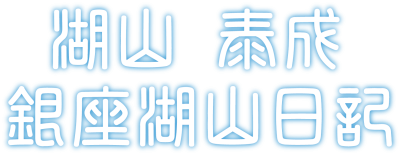40 years with disaster

Forty years ago, I opened an emergency hospital in Ginza.
Although it was not the sinking of Japan, there was talk of the Great Tokyo Earthquake.
Thirty years ago, I opened a health care facility for the elderly as a social welfare corporation in Niigata.
Then, we encountered the Chuetsu Earthquake.
That was 20 years ago.
The medical industry immediately moved to provide relief assistance.
However, the welfare industry did not see much support.
Aside from nursing homes run by corporations, special nursing homes run by social welfare corporations were bound by local governments and were unable to provide wide-area support.
So, following the example of the hospital association, I proposed the establishment of a nursing care disaster support network centered on nursing homes across the country.
I donated money to a start-up and named it Thunderbird.
Fifteen years ago, I planned and opened a disaster relief facility on the site of a former elementary school in Tokyo.
A special care facility, a nursing home for the elderly, a mother and child facility, and a park where small helicopters can land as a disaster evacuation center.
The park is usually used as a multipurpose plaza, like a field, without play equipment.
The nursing home also has a large community interaction space like an auditorium on the first floor.
The following year, the Great East Japan Earthquake occurred.
A ship’s worth of aid supplies arrived in Japan from Taiwan, but they were unable to land the supplies.
This is because the recipient has not yet been determined.
At their request, I became the person in charge of receiving the supplies, and delivered a boatload of relief supplies to the nursing home.
The staff then worked together to transport the pistons in a wagon and transport them to a facility in Tohoku.
Over the course of a year, we received a large amount of relief supplies and transported them to Tohoku.
I remember those days vividly like it was yesterday.
This year’s Noto earthquake also caused many houses to collapse.
The Self-Defense Forces are relied on for emergency response, but even the elderly who survive are forced to lose their lives in the cold.
Long-term living support is needed for the elderly.
Moreover, there are treatments for chronic diseases.
There’s also the new coronavirus and influenza, which has been on the rise again recently.
Koyama G provides daily life support in addition to nursing care and medical care.
Medical care will be handled through online consultation.
Underneath this mission is Koyama G’s medical welfare.
It was a job he volunteered for.
People with this ambition become Koyama G’s friends.
The siren continues to sound.
This year, wide-area disaster training will also be expanded at facilities in Tokyo.
Pulse oximeter 98/99/98
Body temperature 36.5 Blood sugar 181
Trapped in Dejavu
CEO Yasunari Koyama
